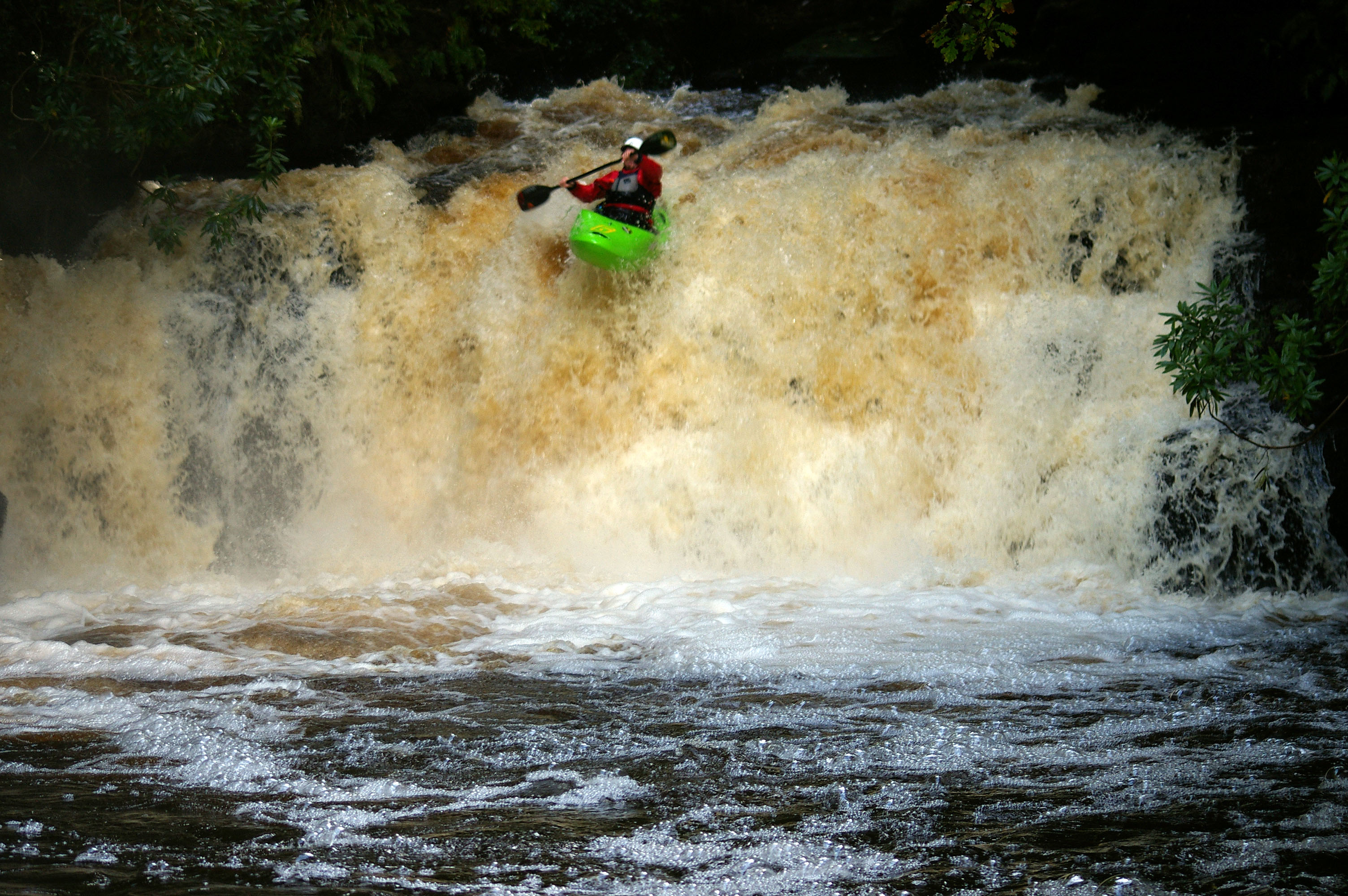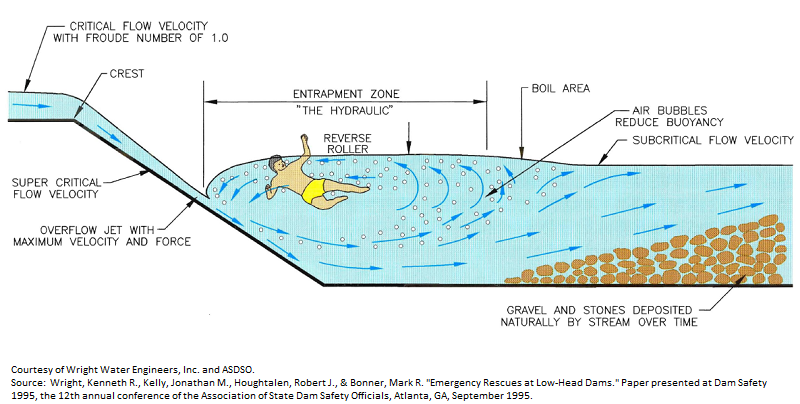Freshwater Paddling
Freshwater consumes a large majority of all whitewater
paddling. The steady flow of water down and over obstacles
provides an enjoyable way for enthusiast to get their fix.
Water provides a forces to push paddlers down creeks
and rivers. Gravity provides a force for the water and
boater to lose altitude.
F=ma provides an explanation for the amount of force
acting on a boat from water. The more water and the faster
the water is moving, the more force is displaced onto the
paddler and his boat.
 |
| A common feature in whitewater kayaking is a hole. Holes can be a fun but also very dangerous feature on the river for paddlers. Holes occur when flowing water drops over a steep ledge. This causes water to accelerate down the slope. Some of the water at the bottom of the water column keeps its momentum, but some of the water in the upper portion of the water column recirculates. |
 |
| In this image you can see
that steeper rocks and obstacles under the water
causes more water to recirculate. This area where
the water is recirculating is called the boiling
point. It is very aerated and turbulent. Holes
that have large boiling points are far more
dangerous to paddlers. |
 |
| Holes are a result of a
hydraulic jump. A hydraulic jump is where a
shallow high velocity laminar body of water is
irritated by some means, such as a boulder. The
result is a deeper area of water immediately after
the jump. The water is aerated because the high
velocity water moving into the jump carries air
with it. The air in the water is what causes it to
travel up to the surface and back towards the
jump. This is effectively conservation of
momentum. We have less mass, traveling at a higher
speed as the initial. Then more mass traveling at
lower speeds as the final.
where rho is the density of the water.
is the change in depth before and after the jump,
and
is the change
in velocities before and after the jump. Stationary waves are formed when the fast moving water was enough momentum of room to run out longer |
 |